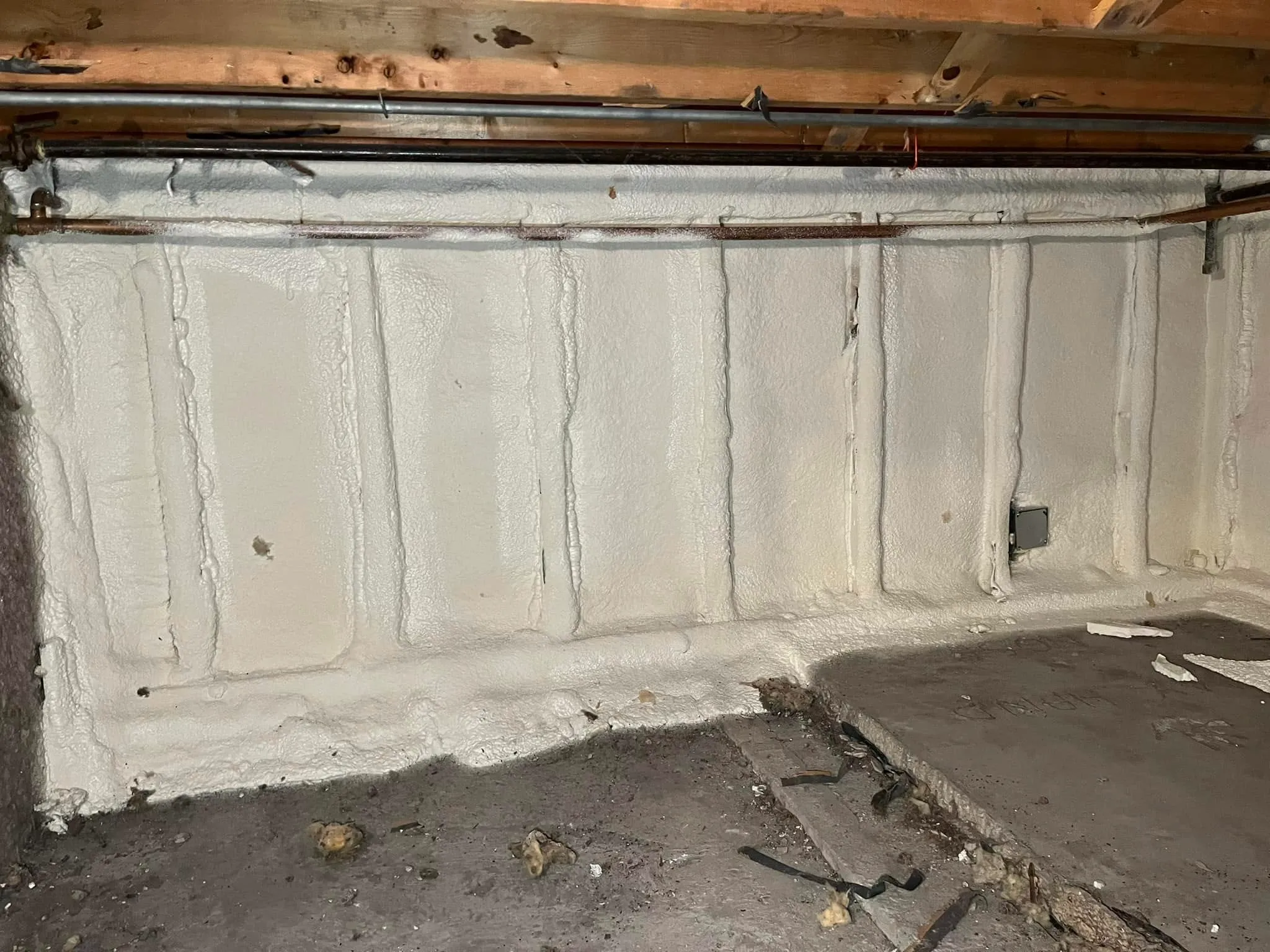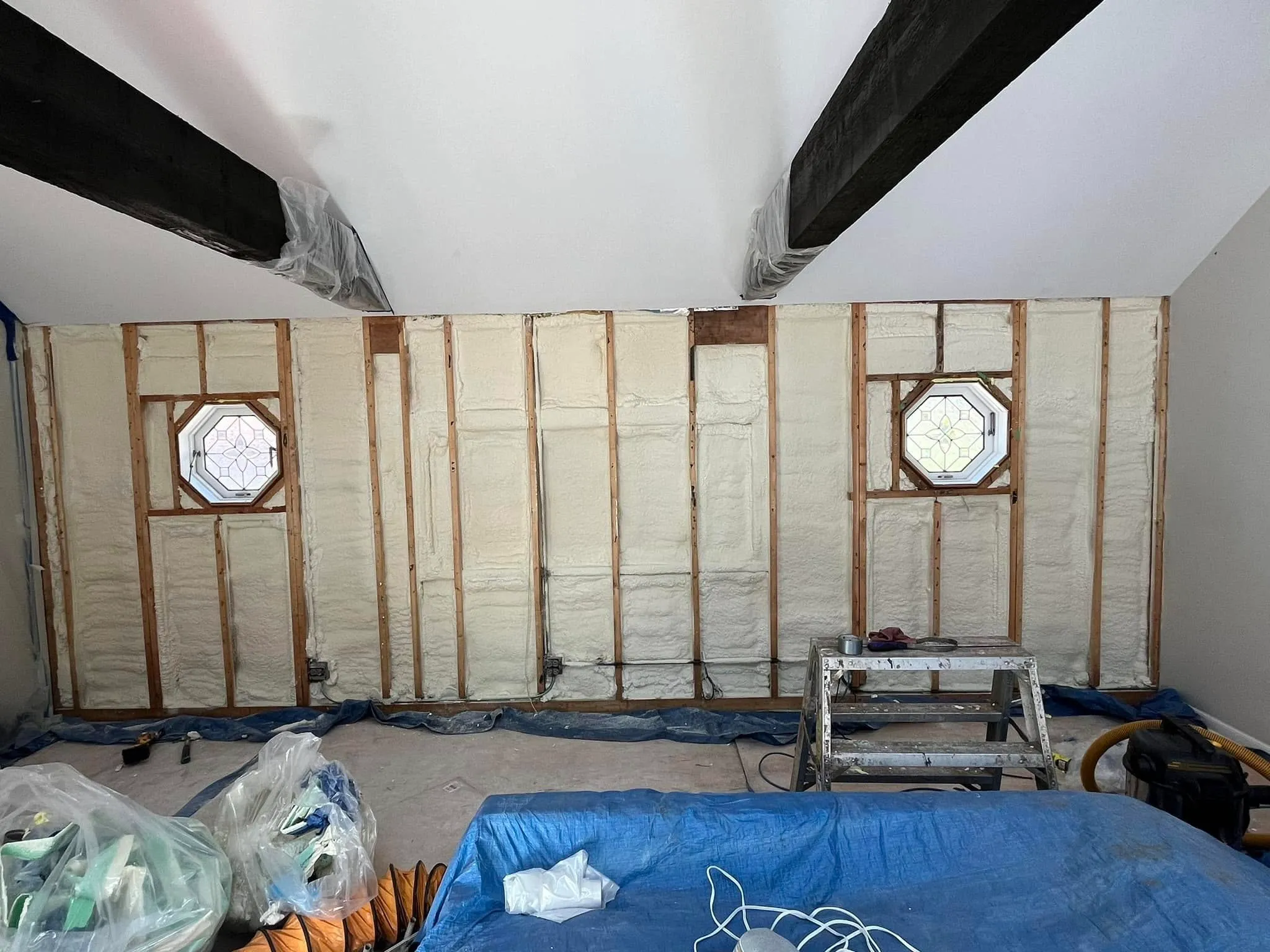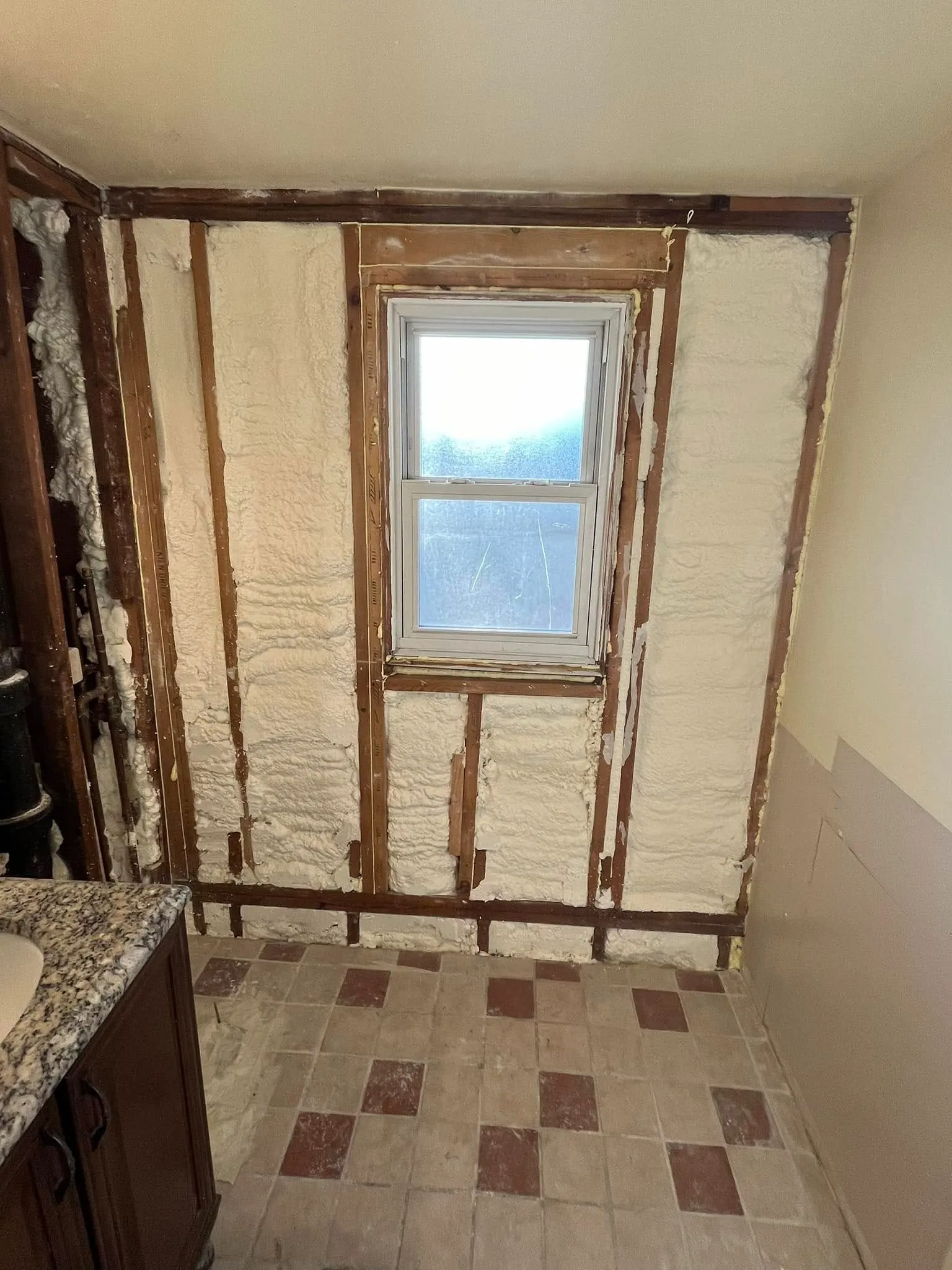
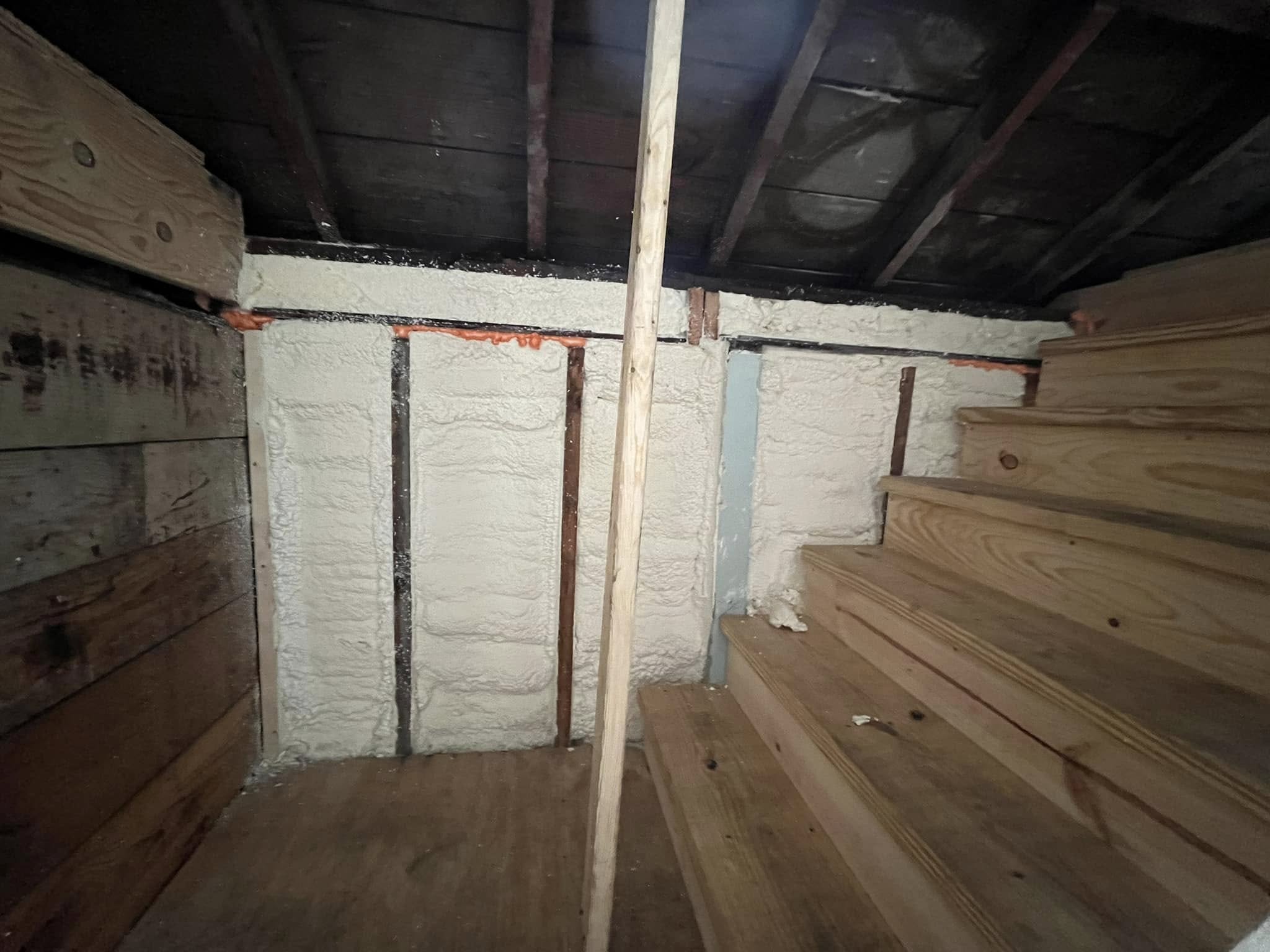
It’s a common story for homeowners: you feel a persistent draft in the living room, notice your energy bills climbing higher each winter, or hear every single sound from the street outside. These issues often point back to one culprit: inadequate or outdated insulation. In the search for a solution, many people come across spray foam, a modern material that promises to solve these problems. But the world of spray foam has its own complexities, with two main types, open cell and closed cell, each serving very different purposes. Understanding which one is right for your home is the first step toward creating a more comfortable, quiet, and energy-efficient space.
This guide is built from years of hands-on experience working with different insulation materials in homes just like yours. We’ve seen what works, what doesn’t, and why choosing the right product for the right application matters so much. Here, we will focus entirely on open cell spray foam insulation. We’ll break down exactly what it is, how it works, and where it shines. You’ll get a clear picture of its benefits, its limitations, and the specific situations where it is the absolute best choice.
This guide will empower you to make a confident and informed decision for your home.
At its most basic level, open cell spray foam is a type of polyurethane insulation that is applied as a liquid and expands into a soft, flexible foam. It’s created by mixing two chemical components, an isocyanate and a polyol resin, which react rapidly to expand up to 100 times their original volume. This expansion is what allows the foam to fill every crack and crevice, creating a powerful air seal.
The liquid components are pumped through a heated hose to a spray gun. When sprayed onto a surface like the underside of a roof deck or into a wall cavity, the mixture expands almost instantly. The chemical reaction creates bubbles, and in open cell foam, the walls of these tiny bubbles are intentionally broken or left incomplete. This creates a matrix of interconnected cells that are filled with air.
This structure is the key to how it works. The trapped air within the cells is what provides the thermal resistance, or R-value. But more importantly, the foam’s ability to expand and adhere to surfaces creates a continuous barrier that stops air movement. A significant portion of a home’s energy loss is not from heat conduction through materials but from air leakage through gaps in the building envelope. A report from the U.S. Department of Energy highlights that air sealing is a critical step in improving energy efficiency, and this is where open cell foam excels.
Imagine a sponge. It’s full of interconnected pockets that can hold water but also let it pass through. Open cell spray foam has a similar physical structure. The cells are not fully sealed from one another, which is why the foam is soft, light, and flexible.
This open structure gives the material several distinct characteristics:
When evaluating any insulation, there are a few key metrics to understand. For open cell spray foam, these are quite different from its denser counterpart, closed cell spray foam.
Key Takeaways: The Basics Open cell spray foam is a low-density, flexible insulation known for its exceptional air-sealing properties. Its structure consists of interconnected cells that trap air for insulation and absorb sound effectively. While its R-value per inch is moderate (R-3.5-3.8), its ability to stop air leakage makes it a highly effective thermal barrier in the right applications.
No insulation product is perfect for every situation. Understanding the specific strengths and weaknesses of open cell spray foam is essential for making the right choice. Its unique properties create a distinct set of advantages and disadvantages.
Here is a simple breakdown for comparison:
| Feature | Open Cell Spray Foam |
|---|---|
| Air Sealing | Excellent |
| Sound Dampening | Excellent |
| Moisture Barrier | Poor (Vapor Permeable) |
| R-Value per Inch | ~R-3.7 |
| Cost | Lower |
| Structural Strength | None |
| Flexibility | High |
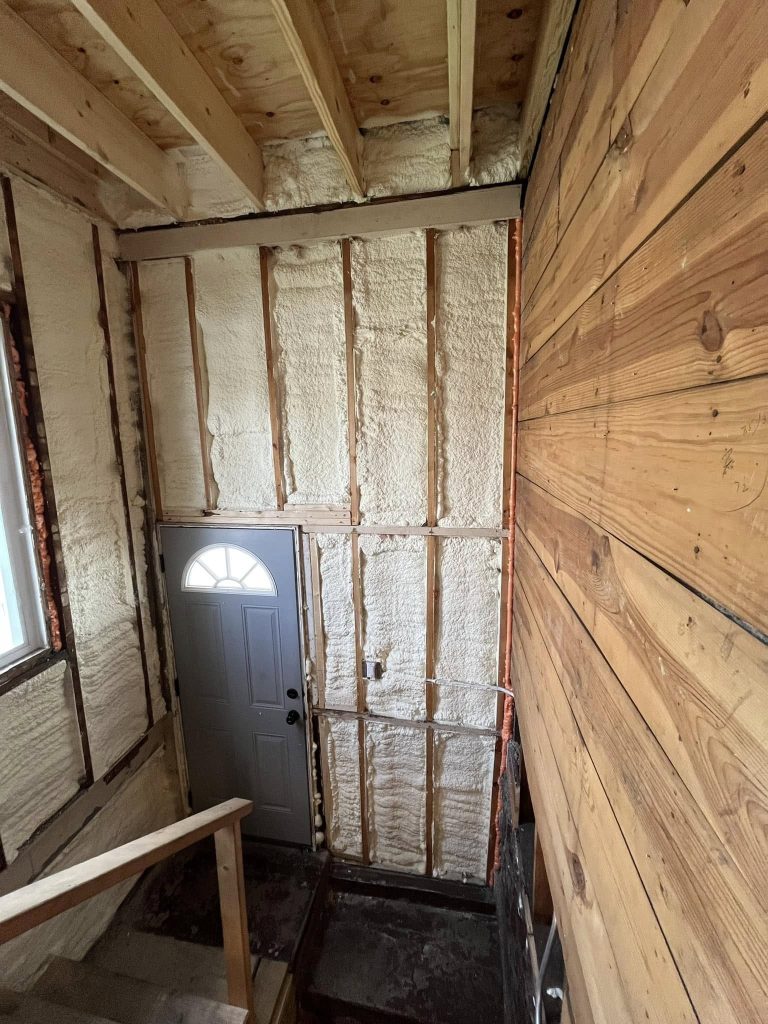
Choosing the right location for open cell foam is just as important as deciding to use it in the first place. Its properties make it a perfect fit for certain parts of a building and a poor choice for others.
The most common and effective applications for open cell foam are in protected, above-ground areas of a home.
Expert Tip: When spraying a roof deck, it’s a good practice to ensure there is adequate ventilation in the attic space unless you are fully sealing it to create a conditioned attic. A professional can advise on the best approach for your specific climate and home design.
The Achilles’ heel of open cell foam is its relationship with water. Because it absorbs water, it should never be used in areas where it could get wet.
Applying spray foam is not a DIY project. It requires specialized equipment, extensive training, and strict adherence to safety protocols. A professional installation ensures the foam performs as expected and is safe for your home’s occupants.
Before any spraying begins, the area must be properly prepared. This involves:
The installer uses a specialized spray gun to apply the two-component liquid mixture to the target surface. The technician must control the temperature and pressure of the materials precisely to ensure the foam cures correctly. They apply the foam in even lifts, allowing it to expand and fill the cavity.
The foam expands and becomes tack-free in a matter of seconds. It will continue to cure over the next few hours. In wall applications, the foam often expands beyond the face of the studs. Once it’s firm, this excess foam is trimmed flush with a specialized saw or blade so that drywall can be installed over it. After the job is complete, the crew removes all plastic sheeting and cleans the work area.
Expert Tip: Ask your installer about their re-occupancy guidelines. Most manufacturers recommend that homeowners stay out of the house for 24 hours after application to allow the foam to fully cure and any volatile organic compounds (VOCs) to dissipate. A study from the U.S. Environmental Protection Agency discusses the importance of proper curing and ventilation to minimize potential health concerns.
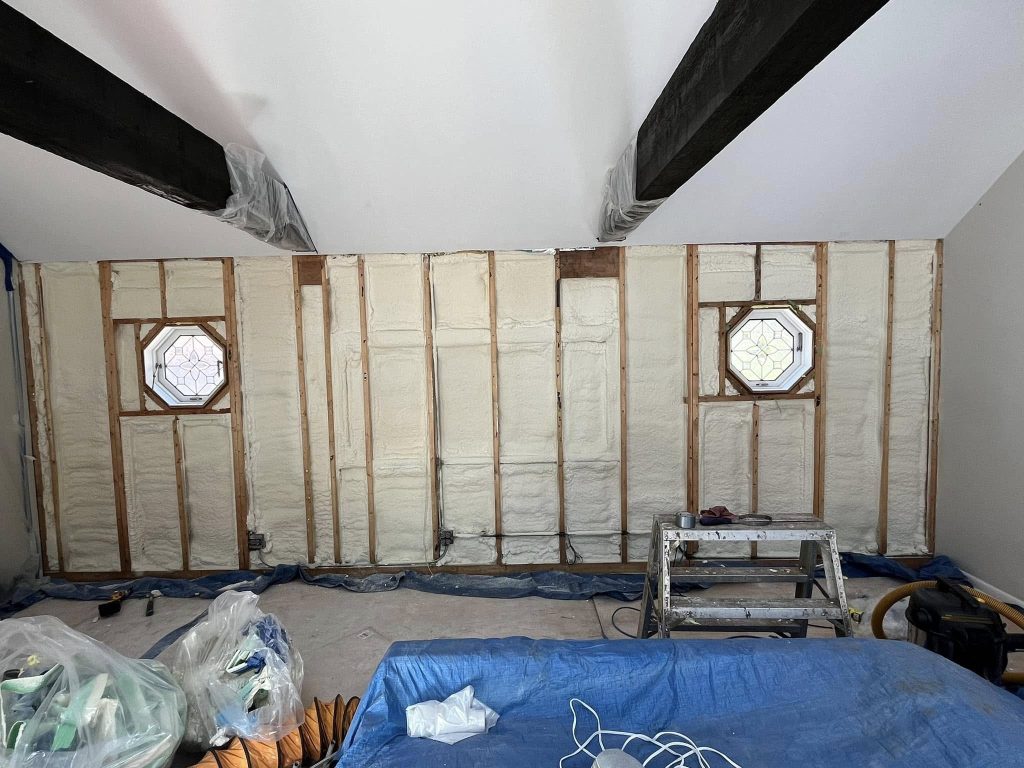
The cost of open cell spray foam insulation is typically measured by the “board foot,” which is a one-foot by one-foot square at one-inch thickness. The price can vary based on several factors.
Open cell foam typically costs between $0.45 to $0.75 per board foot, while closed cell foam runs from $1.00 to $1.50 per board foot.
Let’s say you want to insulate a 1,000-square-foot attic roof deck to R-20.
While the closed cell option is more expensive, its added benefits (like being a vapor barrier) might make it worthwhile in certain situations.
The upfront cost of spray foam is higher than traditional insulation, but the investment pays off over time through lower energy bills. The airtight seal it creates can dramatically reduce heating and cooling loads on your HVAC system, leading to monthly savings that can eventually recoup the initial cost. For many homeowners, the added comfort and sound reduction are immediate benefits that also add value.
How does open cell spray foam stack up against the competition? Here’s a direct comparison with other common insulation materials.
| Insulation Type | R-Value/Inch | Air Seal | Sound Control | Moisture Management |
|---|---|---|---|---|
| Open Cell Foam | ~R-3.7 | Excellent | Excellent | Permeable (lets it dry) |
| Closed Cell Foam | ~R-6.5 | Excellent | Good | Impermeable (blocks it) |
| Fiberglass Batts | ~R-3.2 | Poor | Fair | Absorbs and holds it |
| Cellulose | ~R-3.5 | Fair | Good | Absorbs and can release |
The main difference is in their cell structure, which leads to different properties.
Fiberglass is the most common insulation, but it can’t match the performance of spray foam.
Cellulose is a loose-fill insulation often made from recycled paper.
When installed correctly by a qualified professional, open cell spray foam is a safe and highly effective product. However, poor installation can lead to problems.
The chemical reaction that creates spray foam can release VOCs. If the chemicals are mixed at the wrong temperature or ratio (off-ratio), the foam may not cure properly and could continue to release odors and chemicals into the air. This is the single biggest reason to hire a certified and experienced contractor.
Expert Tip: Always ask your insulation contractor for their certifications. Organizations like the Spray Polyurethane Foam Alliance (SPFA) offer extensive training and certification programs for installers.
Properly formulated and installed foam should not shrink. If shrinkage occurs, it’s usually a sign of a bad chemical mix or improper application. A professional installer will ensure the substrate is the right temperature and is clean and dry before spraying.
Because open cell foam is vapor permeable, you need to consider the building science of your home. In very cold climates (Climate Zones 6 and up), building codes may require a separate vapor barrier on the warm-in-winter side of the insulation. A knowledgeable contractor can determine if this is necessary for your project.
To address other common concerns, here are answers to some frequently asked questions.
You now have a thorough understanding of open cell spray foam insulation. You know it’s a powerful air sealer and an exceptional sound-dampening material. You’re aware of its key benefits, like its flexibility and lower cost, and its important limitations, particularly its inability to block water. Most importantly, you know that its performance is directly tied to the quality of the installation.
For applications like attic roof decks, interior walls, and floors between levels, open cell foam is often the best choice for creating a comfortable, quiet, and energy-efficient home. It addresses air leakage far more effectively than traditional insulation, which is a major source of energy loss. By using this guide, you can confidently assess whether it’s the right solution for your specific needs and have an informed conversation with an insulation professional.
Navigating the world of insulation can be complex, but you don’t have to do it alone. If you have questions about whether open cell spray foam is the right choice for your home or project, the team at South Chicago Insulation is here to help. With years of experience, we can provide a professional assessment and ensure your project is done right. For a no-obligation consultation, feel free to contact us. You can reach South Chicago Insulation by phone at (779) 803-8025 or by email at [email protected].
No, it is not. It will absorb and hold water, much like a sponge. It should not be used in any area where it could come into direct contact with moisture, such as basements or crawl spaces.
It becomes tack-free within seconds of being sprayed and is generally firm within a few minutes. However, it takes about 24 hours for the foam to fully cure and for all application odors to dissipate.
There is a distinct odor during the application process, which is why the area must be well-ventilated and unoccupied. After the recommended 24-hour curing period, properly installed foam should be completely odorless. A lingering chemical smell can be a sign of improper installation.
No. This is not a do-it-yourself product. It requires expensive, specialized equipment and extensive safety training to handle the chemicals and application process correctly. Always hire a professional.
Open cell spray foam has an R-value of approximately R-3.5 to R-3.8 per inch of thickness.
Yes, it is an excellent sound-dampening material. Its soft, porous structure is very effective at absorbing sound waves, making it a great choice for reducing noise in homes and commercial buildings.

